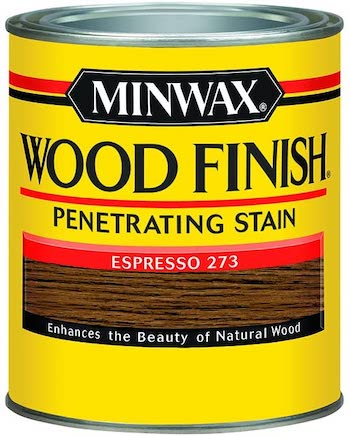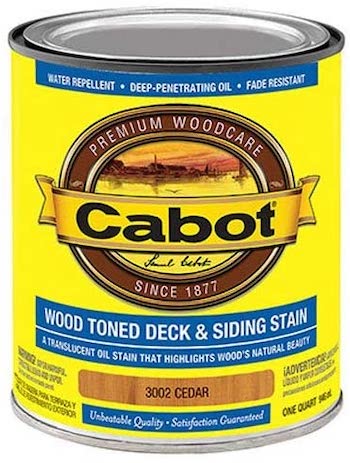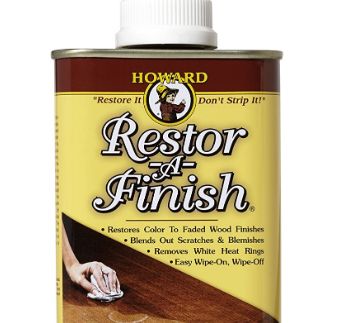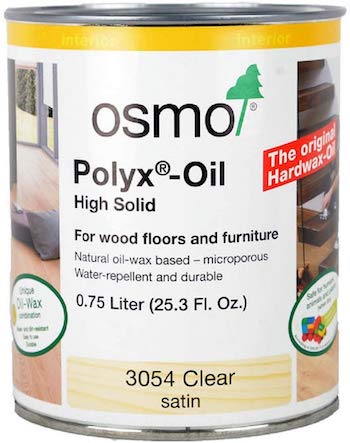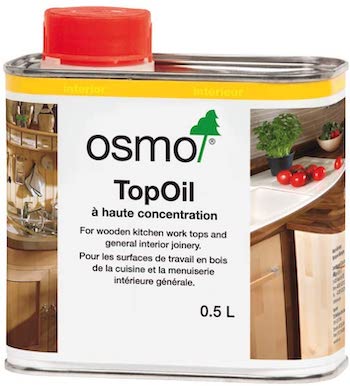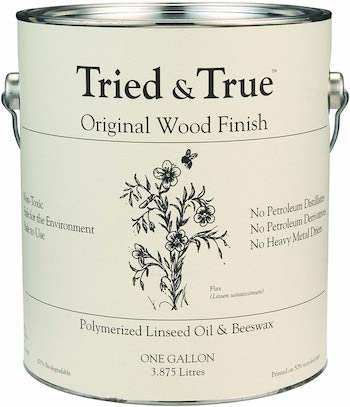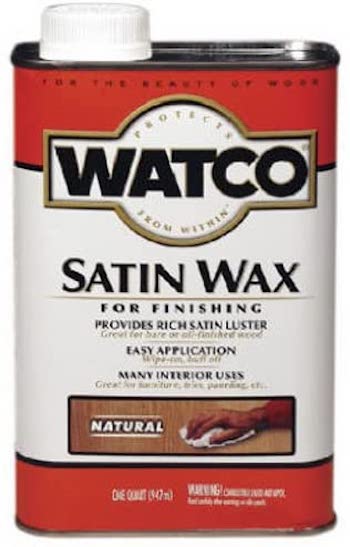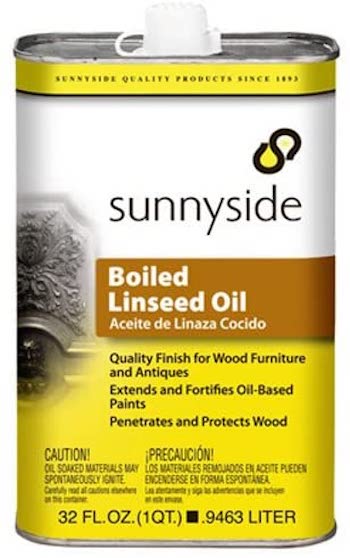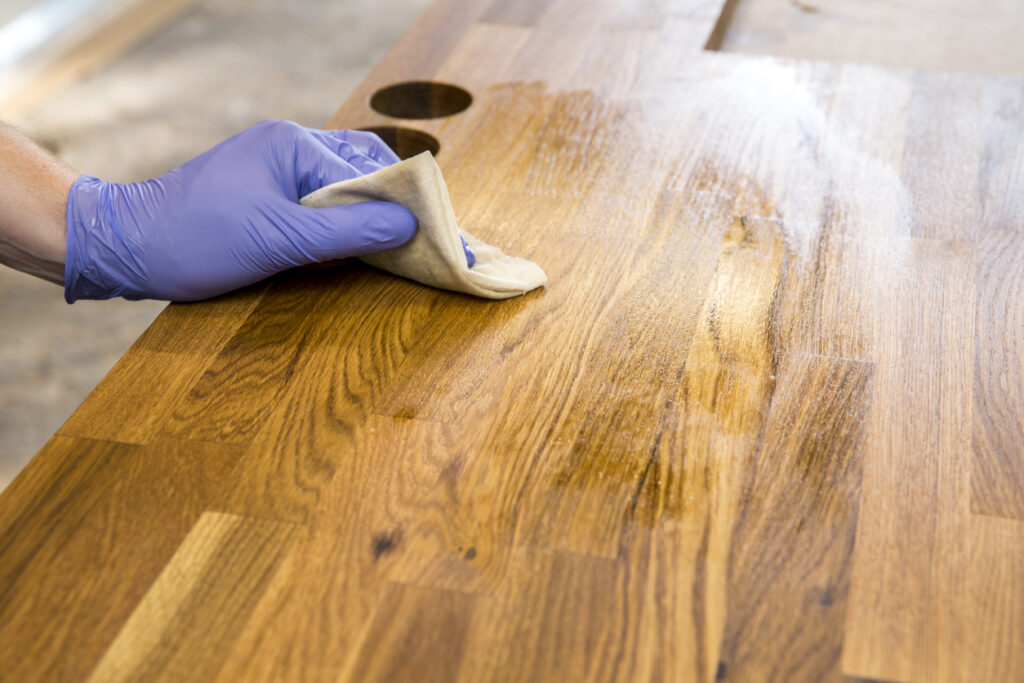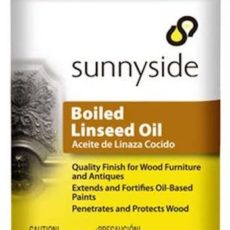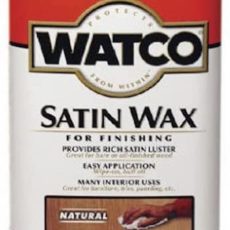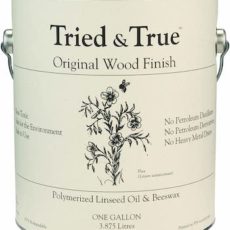Best Oil for Wood on the Market (Reviews + Buying Guide)
Even if you’re a novice in the world of woodworking, still learning your techniques and products, you’ll already know the value of good wood oil or stain. Wood oil is the thing that gives a carpentry project its finished touch, some of its durability, and often also its rich and beautiful color. Because there are many different kinds of wood oil, however, it can be a small challenge to shop for if you’re not very experienced with it yet. Even if you are, finding the best quality for your money and the option that meets your needs best is always quite the task.
That’s why we’ve been gathering the best wood oil offers and links to high-quality products that we can. The goal here is to compare and contrast the features of different wood oils in order to help you figure out precisely which one you should be getting.
What is wood oil?
Wood oil is a topical oil substance that “finishes” a wooden project in certain ways. Some wood oils are better for protecting the smooth wooden surface, while others are geared towards deepening the color. Wood oils and actual wood stains are different- the oil is applied after the stain- but they do often work hand in hand to change the wood’s appearance. Wood oil is also different from a wood seal. It doesn’t noticeably coat the wood in anything; rather, it is absorbed in the wood’s pores.
How many different kinds of wood oil are there?
You will find many different kinds of wood oil, often with different purposes when it comes tohow the application of the oil changes the wood’s surface. Wood oil can be used to:
- Protect the wood and promote durability.
- Provide the wood with increased water resistance.
- Add decorative value but deepening or enriching the natural color.
- Give the wood additional shine (but not with as much of a film as an actual wood gloss).
- Nourish the wood for strength before you seal it with a glossy or matte wood sealer.
The best oil for wood
If you could use some guidance when it comes to purchasing the best wood oil for your needs, check out this list that outlines the perks and drawbacks of the eight best wood oils we found online.
1. Sunnyside Corporation boiled linseed oil
This offer fromSunnyside Corporation provides you with 32 fluid ounces of boiled linseed oil. This oil is particularly good for protecting refinished and refurbished antiques, enhancing natural wood and grain patterns, and provides a fortifying base coat for stains and sealers to be painted on top.
This brand is notable for its uniform coverage and long-lasting, glossy finish.
Keep in mind when you’re giving yourself the time to complete your project that this oil takes between 12-18 full hours to dry completely, especially if you intend to put a coat of something else overtop.
If you don’t wait until the oil is fully dry, the products might streak.
View price on Amazon2. Rust-Oleum natural satin finishing wax
This particular coating fromRust-Oleum is used more like a final layer than the average wood oil owing to the fact that it’s formulated more like wax.
It stillapplies just like a standard wood oil, but the real charm in its use, besides the protective layer it gives the wood once it has absorbed, is in its pretty and very natural-looking satin finish.
Because this kind of wood oil is actually the topcoat itself, rather than something you’ll be covering with another product, it’s a little more imperative that you take great care in your application.
The product is very easy to use, so it’s nothard to do a good job; it’s just worth noting that this layer will be seen in the finished product.
View price on Amazon3. Tried and True original wood finish
If you’re the kind of person who has long been attempting to move towards natural and organic ingredients in your life and the things you use whenever possible, then you’ll love this oil-based wood finish from Tried and True.
This finish, which can be a baseor topcoat, is made from polymerized linseed oil and beeswax, providing in particular durability in its protection of the wood. Its finished quality is intended to look as natural as possible, making it great for reinvigorating the look of antiques.
This product’s finish is visually rather beautiful, but it’s necessary to apply it inextremely thin coats and build it up to the look you want. Otherwise, it will take many days to dry, according to reviews from previous buyers.
View price on Amazon4. Osmo clear matte top oil
If you’re looking for something that will provide even more resilience than usual and also give you a different, very natural look, then you might find success with this wood oil fromOsmo. It’s another topcoat, intended to be the last layer you apply.
Rather than adding gloss and shine, however, this coating gives you a smooth and very pleasing matte finish effect. While it’s doing that, it also water and chemical-resistant, making it great for using on wooden countertops because it protects them against spills.
The product tests very well indeed with customers, particularly because it’s food safe and therefore also suitable for kitchen furniture like dining tables. It’s worth noting, however, that most previous buyers found that getting the finish they really wanted to require two coats, each with full drying time.
View price on Amazon5. Osmo Polyx hard wax oil
Are you actually hoping to purchase a wood oil that’s specifically geared towards finishing wood floors since that’s your current project? Well, this next product from Osmocan be used on other things, but it’s also formulated with use on floors in mind.
This accounts for its super hardy effect and the fact that it doesn’t crack, flake, peel, or experience permanent marking from moisture or spills.
Be aware that this product is not actually geared towards use on counters and tables. This is because it wasn’t formulated to be food safe.
View price on Amazon6. Restor-A-Finish mahogany oil
Although this next wood oil fromRestor-A-Finishcan be used as a first-time oil treatment on a newly finished piece, its real intended use (and what it was formulated for) is to be a refurbishing tool for older, used pieces of furniture that need to be restored.
The purpose of this oil is to conceal blemishes, blend out scratches and nicks, and flawlessly cover tings on ables left by heat and moisture.
Because it’s primarily designed to be a refurbishing tool, you’ll want to use it invery thin layers if you pick it up as a first coat wood oil instead or want to use it on something new. You can always build-up to the finish you’re looking for, but you can’t take it off if you layer too thickly right from the start, which is very easy to do in this case.
View price on Amazon7. Cabot clear solution cedar tone deck and siding stain
If you’re actually more interested in finding a wood oil that can withstand outdoor projects, then we think you’ll appreciate this type fromCabot that provides more protection and gives you a deeper stain. Once absorbed, this oil increases durability for the purposes of withstanding weathering, but it’s also built to age beautifully even as it lasts.
Because it’s primarily used on larger pieces that require you to get a little more hands-on, the brand made sure it will clean off your skin simply with soap and water, so you’re not stained right along with your work. It’s best used on deck and house siding.
As with any stain, this wood oilwill technically work on smaller projects as well, but it hasn’t been tested for food safety, so it’s not necessarily recommended for countertops or dining tables.
View price on Amazon8. Minwax wood finish interior penetrating stain
If you’re looking for a product with the protection of good wood oil but the color changing powers of a stain, you might prefer to work with this option from Minwax. This stain absorbs quickly and deeply into unfinished wood, adding color in a range of natural shades (they actually sell 28 choices).
The brand is notable for providing a quality stain effect without covering or taking away from the wood’s natural grain; in fact, it usually looks more enhanced.
Although it will give your wooden piece a little more durability than its natural state, this product does not provide the same level of resistance to things like spills as many of the others on this list wood.
View price on AmazonHow is wood oil used?
Wood oil is most often applied with a clean cheesecloth. It is applied quite liberally, one surface or side at a time, but in careful, even layers so that the finished look is consistent. You can stop applying more oil when the wood no longer absorbs it, and that’s true all over the piece. Then wipe excess oil off with the cloth, set the cloth aside, and work the oil into the wood all over with the heels of your hands. You’re finished when the surface looks even; you can wipe the piece down again with a clean cloth and set it aside to finish absorbing naturally.
The shelf life of wood oil
Once you’ve opened and used your wood oil, its shelf life remains extremely impressive. So long as you’ve stored the leftover product properly, you can continue using it for over five years. This doesn’t mean, however, that you shouldn’t still check the quality of an older can of opened oil before you use it; test it on a piece of scrap wood first to make sure that it’s still in good working order.
How to store wood oil
Wood oil stores best in the tin that you purchased it in, with the lid screwed tightly shut. Keep it somewhere dry and cool, high up and out of the reach of children. If your can is not close to full and there is air in the top, or “headspace,” then your oil might develop a film across the top that can affect its smooth application. This is why you should always check what condition your previously opened wood oil is in before you start applying it to a new project.
Do you know a woodworking enthusiast who needs wood oil but still feels like they need a little more help finding the best option? Share this post with them, so they have all kinds of information to consider.
